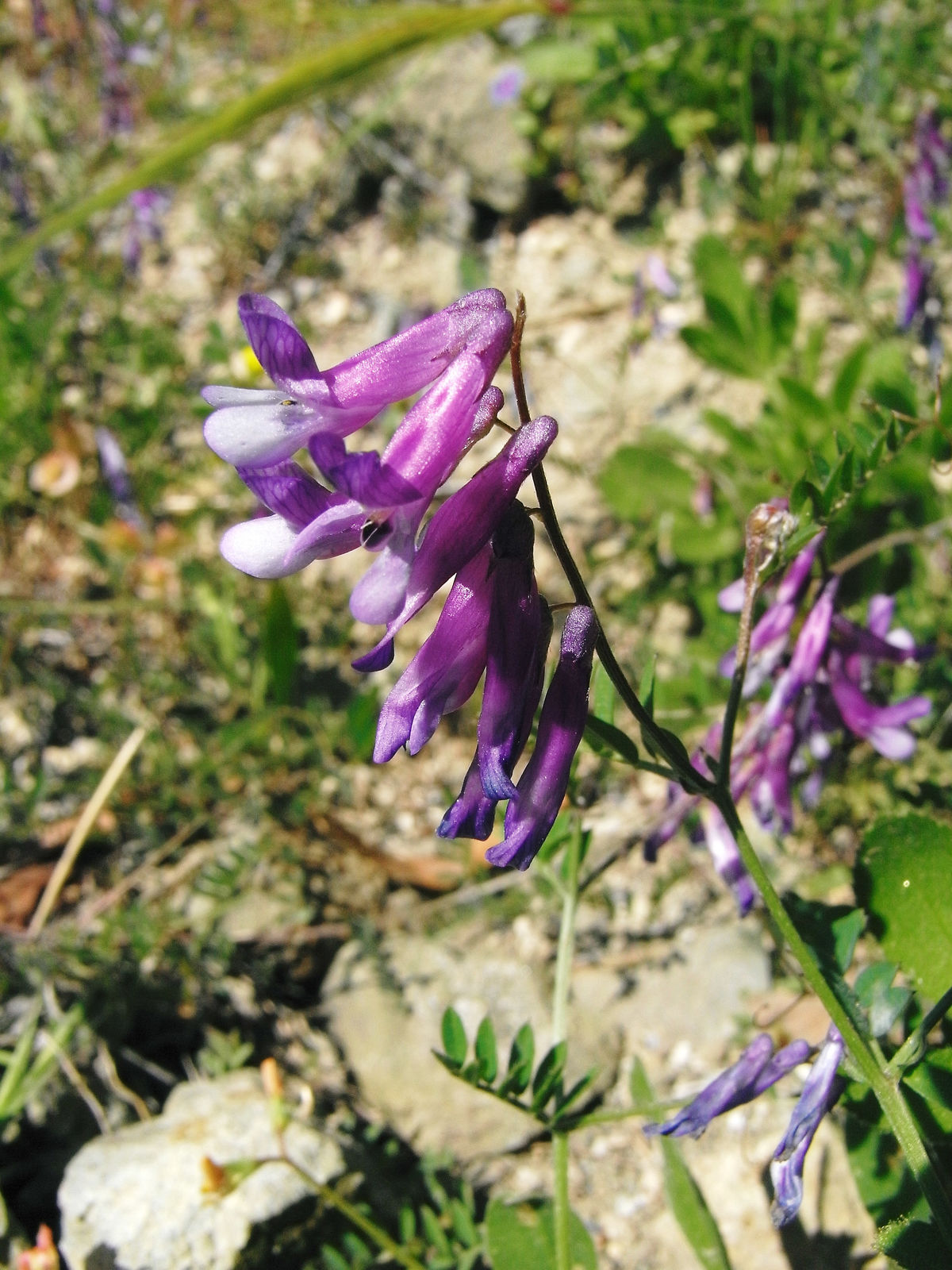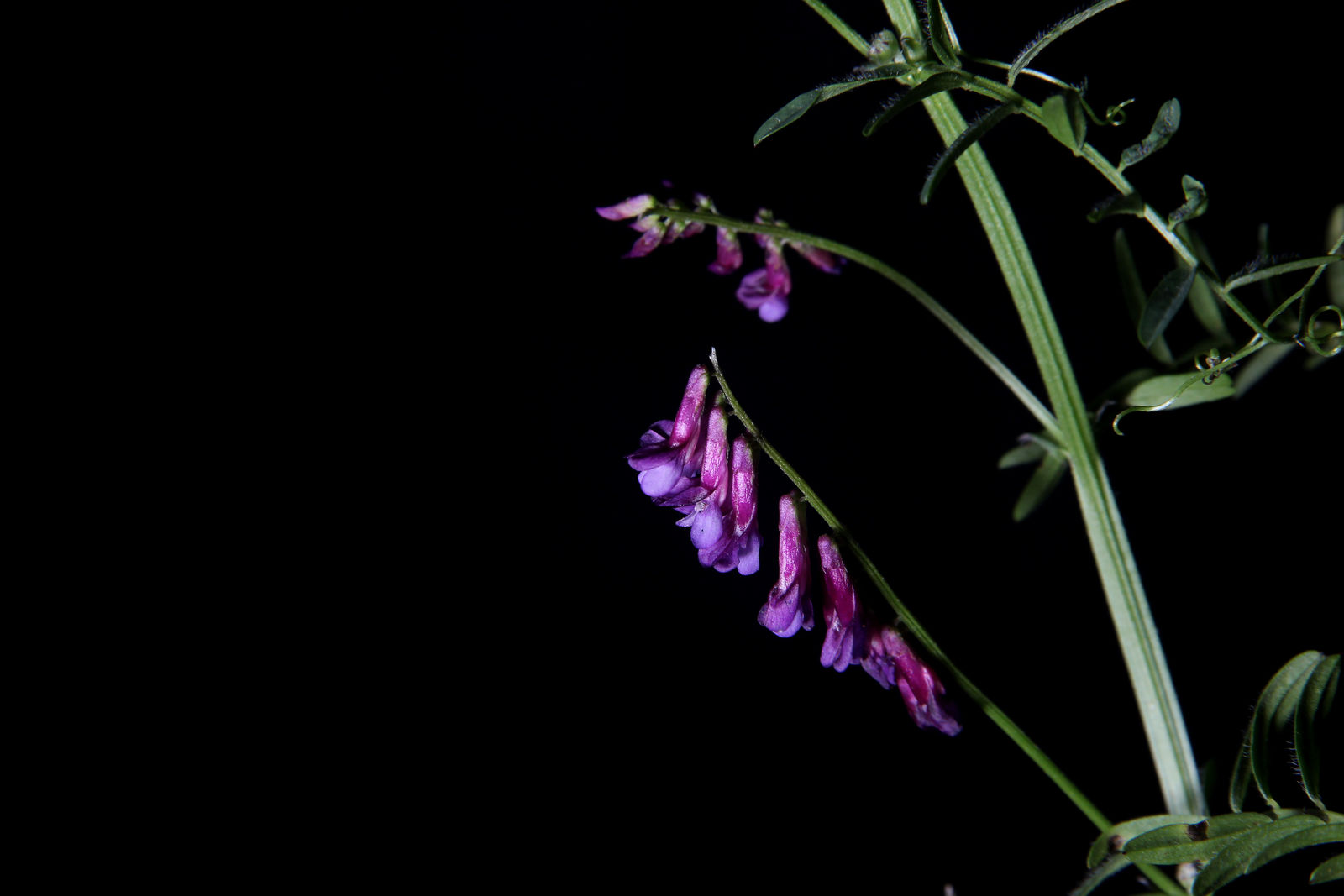Hairy Vetch
vicia villosa
Also known as: ["Hairy Vetch","Sand Vetch"]
Overview
A hardy annual legume known for its hairy stems and leaves, often used as a cover crop and forage plant.
Benefits & Perks
["disease resistant","cold hardy","wildlife attractant (bees, butterflies, birds)","drought tolerant","nitrogen fixing"]
Botanical Classification
| Phylum: | Magnoliophyta |
| Class: | Magnoliopsida |
| Order: | Fabales |
| Family: | Fabaceae |
| Genus: | Vicia |
| Botanical Name: | Vicia villosa |
Plant Characteristics
Basic Information
- Category: Herbs & Weeds
- Suitable Location: outdoor garden bed, often used as a cover crop
- Suitable For:
- Is Weed: No
- Allergenicity: low
Environmental Needs
- Climate: {"temperatureRange":"–30 to 30°C"}
- Hardiness: {"zones":"3–9"}
- Misting: rarely required
- Drainage: Well-draining to moderately draining; avoid waterlogged conditions.
- Soil Type: Rich, loamy soil with good organic matter content.
Maintenance Level
- Maintenance Level: low
- Toughness Level: high
- Pruning Frequency: Annually in early spring or after flowering.
- Pruning Intensity: Light to moderate; remove no more than 20–30% of growth at a time.
Care Details
Ideal Sunlight Coverage:
Full sun (6–8 hours/day) in cooler climates; partial shade in hot regions to prevent scorching.
Sunlight Tolerance Tips:
Acclimate plants gradually to intense sunlight; provide shade during peak summer heat; adjust placement based on seasonal light intensity.
Care Requirements
Care Difficulty
easyeasy
Sunlight
full sun to partial shade
Rotate plants for even light exposure; use shade cloth in extreme heat; monitor for signs of sunburn.
Watering
every 7–10 days during active growth, reduce in winter
Water thoroughly until runoff, allow soil to dry slightly between waterings, avoid overhead watering to prevent fungal issues.
Soil
well-drained, loamy soil with moderate fertility
pH: Slightly acidic to neutral (pH 6.0–7.0).
Test soil pH annually; amend with lime if too acidic; ensure consistent moisture retention.
Temperature
Prefers cool to moderate temperatures (50–75°F); tolerates frost but struggles in prolonged heat above 80°F.
Protect from late frosts; avoid placing near heat sources; monitor microclimates.
Fertilizing
every 4–6 weeks during growing season
Fertilize sparingly; focus on phosphorus and potassium for root and flower development; cease fertilizing in late summer.
Propagation
Methods
Seed propagation is most common; can also be propagated by division in early spring.
Step-by-Step Propagation Guide
- Sow seeds 1/4 inch deep.
- Keep moist.
- Thin seedlings.
- Or divide clumps carefully, replant immediately.
Best Time: Early spring before active growth begins; late summer for seed sowing.
Environment
Warm (60–70°F), bright indirect light, consistent moisture for seeds; division requires similar conditions to mature plants.
Medium
Well-draining seed starting mix or garden soil with compost.
Hormone
Not required for seeds; division requires no hormone.
Timeline
Seeds germinate in 1–3 weeks; plants establish within a growing season.
Tools Needed
Seed trays, trowel, sharp knife (for division), watering can.
Quick Tips
Sow seeds in groups for better germination rates; divide plants every 2–3 years to maintain vigor.
Pruning & Repotting
Pruning Guide
Method
Cut stems back to a healthy bud or lateral branch; thin out overcrowded areas.
Pruning Plan
Minimal pruning needed; focus on removing dead or damaged stems to improve air circulation.
Tools
Pruning shears, bypass cutters, gloves.
Checklist
Sterilize tools; prune dead/damaged stems; improve airflow; avoid excessive cutting.
Repotting Guide
Best Season
Early spring before new growth starts.
Pot Size
Increase pot size by 2–3 inches in diameter for container plants.
Method
Gently remove plant; trim roots if pot-bound; repot in fresh, well-draining soil with added compost.
Suggestions
Not typically required for field-grown plants; container-grown plants may need repotting every 2–3 years.
Checklist
Choose appropriate pot; prepare fresh soil; handle roots carefully; water after repotting.
Advanced Care Tips
Watering Mastery
Watering Checklist
Check soil moisture with finger; water deeply; ensure drainage; avoid wet foliage.
How to Apply Water Properly
Water directly at the root zone, ensuring even saturation to a depth of 6–8 inches, allow excess water to drain freely, water early in the morning to minimize evaporation.
Watering Schedule Tips
Water deeply once a week during active growth, reducing frequency in winter dormancy; adjust based on rainfall and soil moisture.
Soil Improvement
Add compost or well-rotted manure; incorporate perlite or sand for drainage; use green manure crops to enrich soil.
Temperature Stress Management
Signs of Temperature Issues
Chlorosis or wilting in excessive heat; stunted growth or bud drop in cold stress.
Cold Stress
Slows growth, reduces nitrogen fixation, and may cause leaf necrosis in severe cases.
Solution: Mulch heavily to insulate roots; provide wind protection; avoid overwatering in cold soil.
Hot Stress
Leaves may scorch, growth halts, and flowering decreases in high temperatures.
Solution: Provide afternoon shade; increase watering frequency; use reflective mulch to reduce soil heat.
Fertilizing Guide
Fertilizing Checklist
Use balanced fertilizer; apply at half-strength; avoid nitrogen-heavy formulas; fertilize in spring only.
Fertilizing Method
Use balanced, slow-release fertilizer in early spring; avoid high-nitrogen formulas to prevent excessive foliage at the expense of root nodules.
Common Problems & Solutions
Toxicity Warning
Cats
Slightly ToxicCats may experience mild gastrointestinal upset if they consume Vicia villosa seeds or young pods. The lectins in the plant can cause irritation to the digestive tract.
⚠️ Symptoms:
🌿 Toxic Parts:
⚡ Toxic If:
if eaten
Dogs
Slightly ToxicIn dogs, ingestion of Vicia villosa seeds or young pods may lead to mild gastrointestinal irritation due to the presence of lectins. While generally not life-threatening, it can cause discomfort.
⚠️ Symptoms:
🌿 Toxic Parts:
⚡ Toxic If:
if eaten
Humans
Slightly ToxicVicia villosa, commonly known as hairy vetch, contains lectins and other compounds that can cause mild gastrointestinal distress if ingested in significant quantities. The lectins can interfere with nutrient absorption and may lead to digestive upset.
⚠️ Symptoms:
🌿 Toxic Parts:
⚡ Toxic If:
if eaten
Frequently Asked Questions
Q: Is Hairy Vetch suitable for cover cropping?
A: Yes, it is widely used as a cover crop to improve soil health and suppress weeds.
Q: Can Hairy Vetch be grown in cold climates?
A: Yes, it is cold-hardy and can overwinter in many regions.
Q: Is Hairy Vetch toxic to pets?
A: It is mildly toxic to dogs and cats if ingested in large quantities.
Quick Reference
| Family: | Fabaceae |
| Care: | easy |
| Light: | full sun to partial shade |
| Water: | every 7–10 days during activ |
Get Expert Care Tips
Download the Plantious app for personalized care reminders and plant identification!
Google Play App Store








